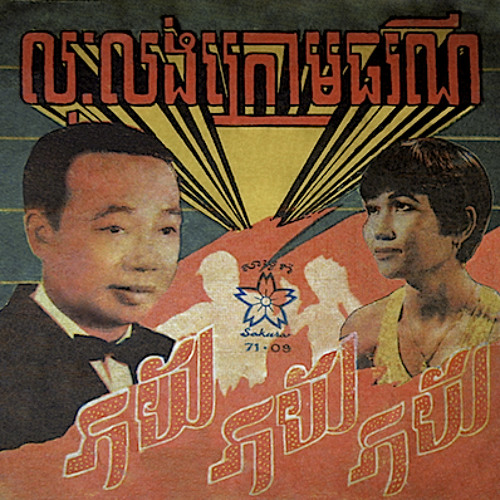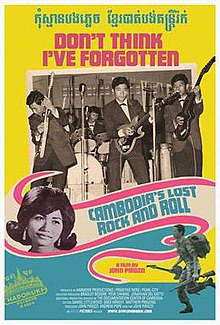continental drift 1/11/23: cambodia
 Continental Drift is finally back after what seems like ages (2 weeks). This week we are dusting off the engines and drifting to Cambodia. Find the playlist here, and listen back to the episode here.
Continental Drift is finally back after what seems like ages (2 weeks). This week we are dusting off the engines and drifting to Cambodia. Find the playlist here, and listen back to the episode here.
The Kingdom of Cambodia is a country in Southeast Asia located in the Indochinese peninsula. It has a population of 17 million, making it the 71st most populated in the world, and 97% of Cambodians practice Buddhism. Its official language is Khmer.
Cambodia has a tropical monsoon climate, featuring two seasons each year (wet from May to September and dry from October to April). At the end of the wet season each year, as the Mekong River sinks back to normal levels, the Tonle Sap River reverses its flow. Bon Om Touk, the Cambodian Water & Moon Festival, is an annual boat rowing contest and the most attended Cambodian national festival. It features games, thanksgivings to the moon, fireworks, feasts, and the boat race on the reversed river.
Traditional Cambodian music comes in 3 forms: pinpeat, phleng kar, and mahori. A pinpeat orchestra contains a ching, roneat, pai au, sralai, chapey, gong, tro, and various kinds of drums, and is sometimes accompanied by pinpeat dance.
Pinpeat sample:
Sathouka // The Pinpeat Orchestra
Mahori is made for noblemen, contrasting with the pinpeat music for dieties. Mahori seeks to “soothe their souls,” and consequently takes on a softer sound. Common instruments include khloy flute, krapeu, tro chhé, tro sor and Tro Ou stringed instruments, and roneat ek xylophone, roneat thong metallophone, skor romonea drums and chhing finger cymbals.
Mahori sample:
Laang Preah Poun Leah // The Mahori Orchestra
The very distinctive rock and roll of Cambodia which was produced in the late 50s, the 1960s and 70s.
Music of the prince
In the 50s, music was celebrated in the country. The prince Norodom Sihanouk was a singer himself, often performing on TV and releasing albums of his work. Norodom Sihanouk took over the country following independence from France in 1953. At this time, records from France, Cuba, and South America were making their way into Cambodian record stores, and it wasn’t long before Cambodian popular artists began to emerge, mixing these styles with traditional singing styles.
The “father of popular music in Cambodia,” as proclaimed by musicologist Sam Ang Sam, was former medical student Sin Sisamouth. For a long time, he dominated the airwaves. People without radios would park their bikes outside the radio stations after work and listen as his music was broadcast on speakers outside the station.

Ros Serey Sothea and Sinn Sisamouth
Ros Serey Sothea worked closely with Sinn Sisamouth, even collaborating with him on dozens of records. Born a rice planter, she took her one shot and moved to Phnom Penh as a teenager, where she was recognized for her singing talent. Her career shot off from there.
The Vietnam war was raging right on Cambodia’s border, though Cambodia was determined to stay neutral. American soliders influenced the music scene of Cambodia through their radio, which exposed the Cambodian people to American rock and roll. One of the first “guitar bands” in the country was Baksey Cham Krong, created in the late 50s and made up of teenage brothers and friends. Whereas Sinn Sisamouth was popular with adults, guitar music became the music of young people.
Now we move on to the 1970s. Early in the 1970s a US-aligned group took over the government, ousting Norodom Sihanouk from power. Sinn Sisamouth, Ros Serey Sothea, etc remained popular, but “hippie” acts began to emerge with long hair and looser styles. None were more famous than Yol Aularong. Working closely with him, sometimes performing in his band, was Pan Rom.
Cambodian Rock & Roll/Psych Rock Segment:
Stingy Cheeks // Sinn Sisamouth,
Khmer folk songs – Srey No (Lady Name No) Original recording
Shave Your Beard // Ros Serey Sothea
BCK // Baksey Cham Krong
Console Me // Sieng Vannthy
Youm Os Tirk Pnake // Pov Vannary
Cyclo // Yol Aularong
Pha em nas sneh (Love Is So Sweet) // Pan Rom
Crazy Loving You // Drakkar
Unfortunately, the music history of Cambodia isn’t a pretty one. Cambodia couldn’t stay neutral forever as war waged on its borders. The US bombed rural Cambodia in hopes of inciting them to action, but it ended up backfiring as rural Cambodians sided with the Khmer Rouge, a communist group backed by China. What sealed the deal for Khmer Rouge was former prince Norodom Sihanouk backing them after China promised they’d subsequently ally with Cambodia. The US pulled out support from the country and a civil war broke out, Cambodians fighting each other.
 The documentary Don’t Think I’ve Forgotten, which chronicles the “lost rock & roll” of Cambodia, describes:
The documentary Don’t Think I’ve Forgotten, which chronicles the “lost rock & roll” of Cambodia, describes:
“After taking over the country on April 17, 1975, the Khmer Rouge began wiping out all traces of modernity and Western influence. Intellectuals, artists and musicians were specifically and systematically targeted and eliminated. Thus began one of the most brutal genocides in history, killing an estimated two million people – a quarter of the Cambodian population.”
As a result, 90% of musicians perished, and Cambodia has had to completely rebuild its arts scene. Players of traditional instruments are designated by the government as essential people in hopes that they will inspire and teach others to take up these styles. While the country is undergoing repair, new bands have emerged to continue on the Cambodian rock and roll tradition that was so strong before.
Revival segment:
(01) Dengue Fever – Both Sides Now (Joni Mitchell cover)
I’m Unsatisfied // The Cambodian Space Project
